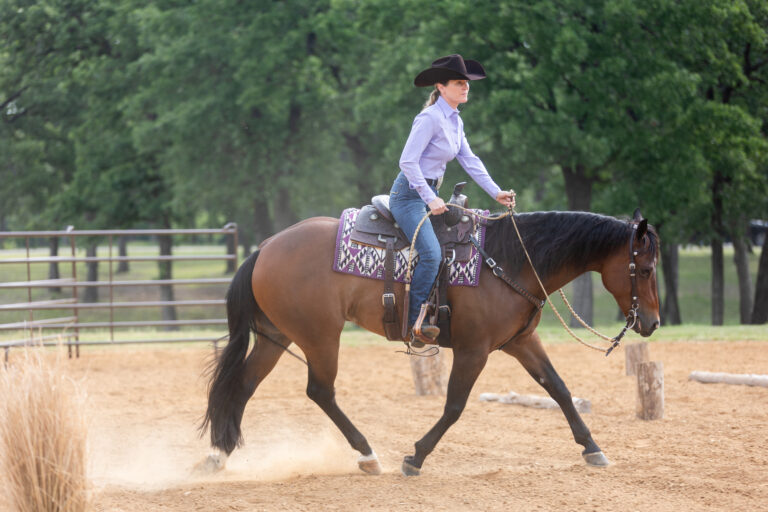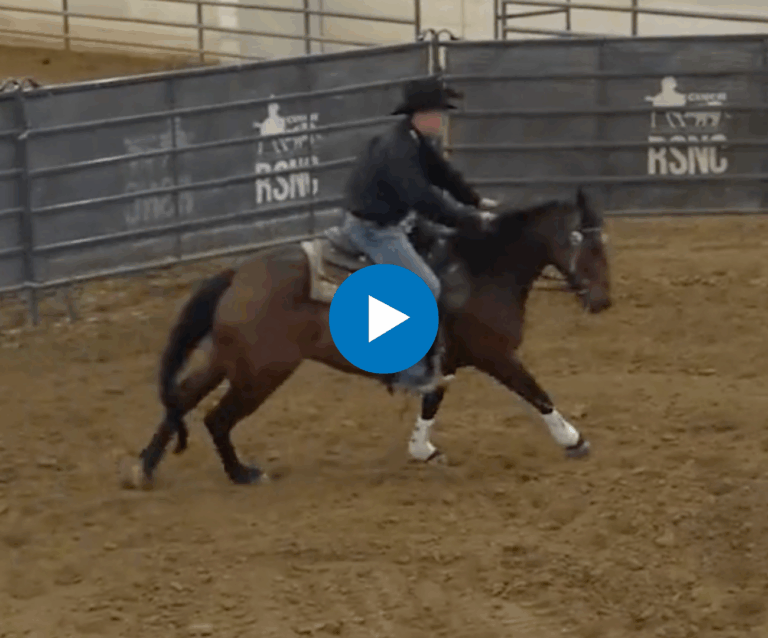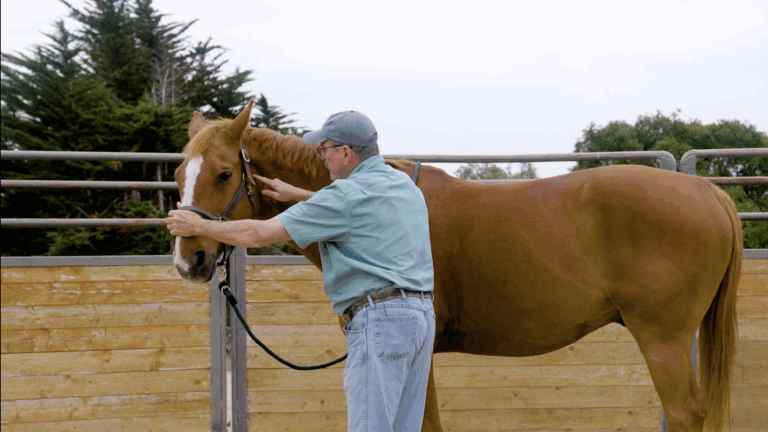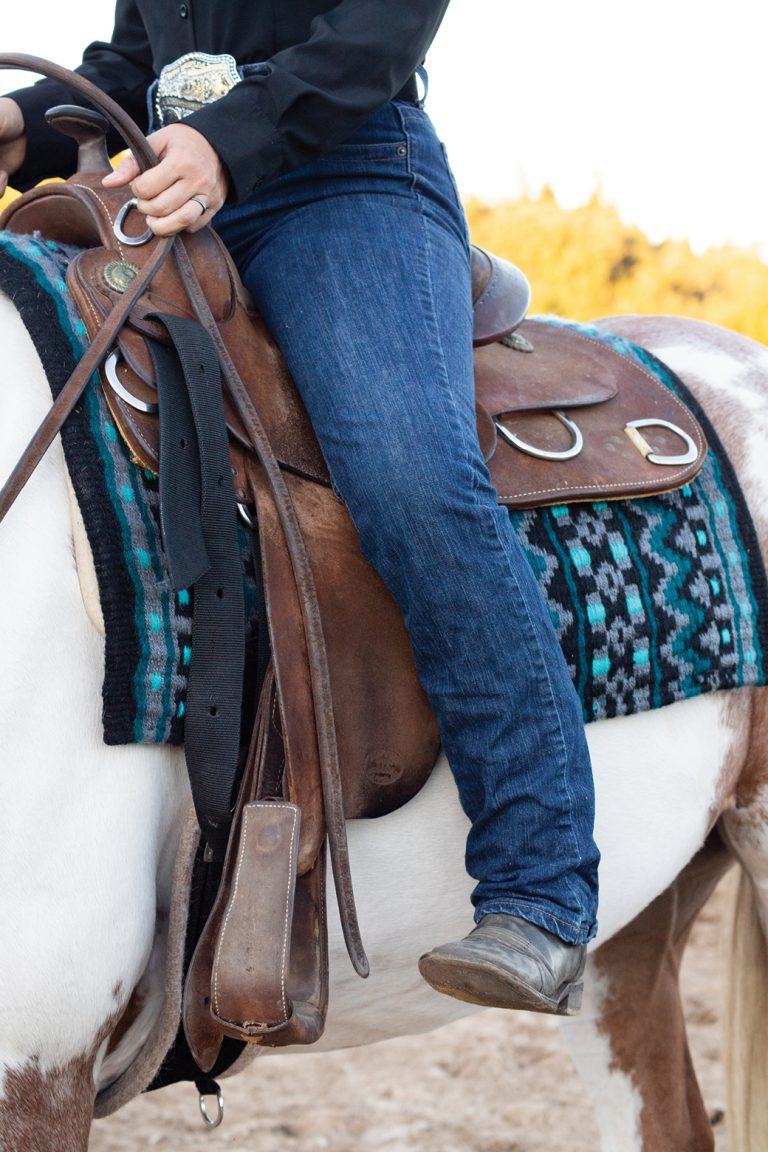How much more could your brain help you to ride better? It’s kind of a funny question, but also an ever-more-relevant one these days. Science is learning more and more about how training your brain, so to speak, can help you in various ways. For example, it can reduce anxiety and sharpen your mental focus, both of which will improve your performance in the saddle (and elsewhere, for that matter).
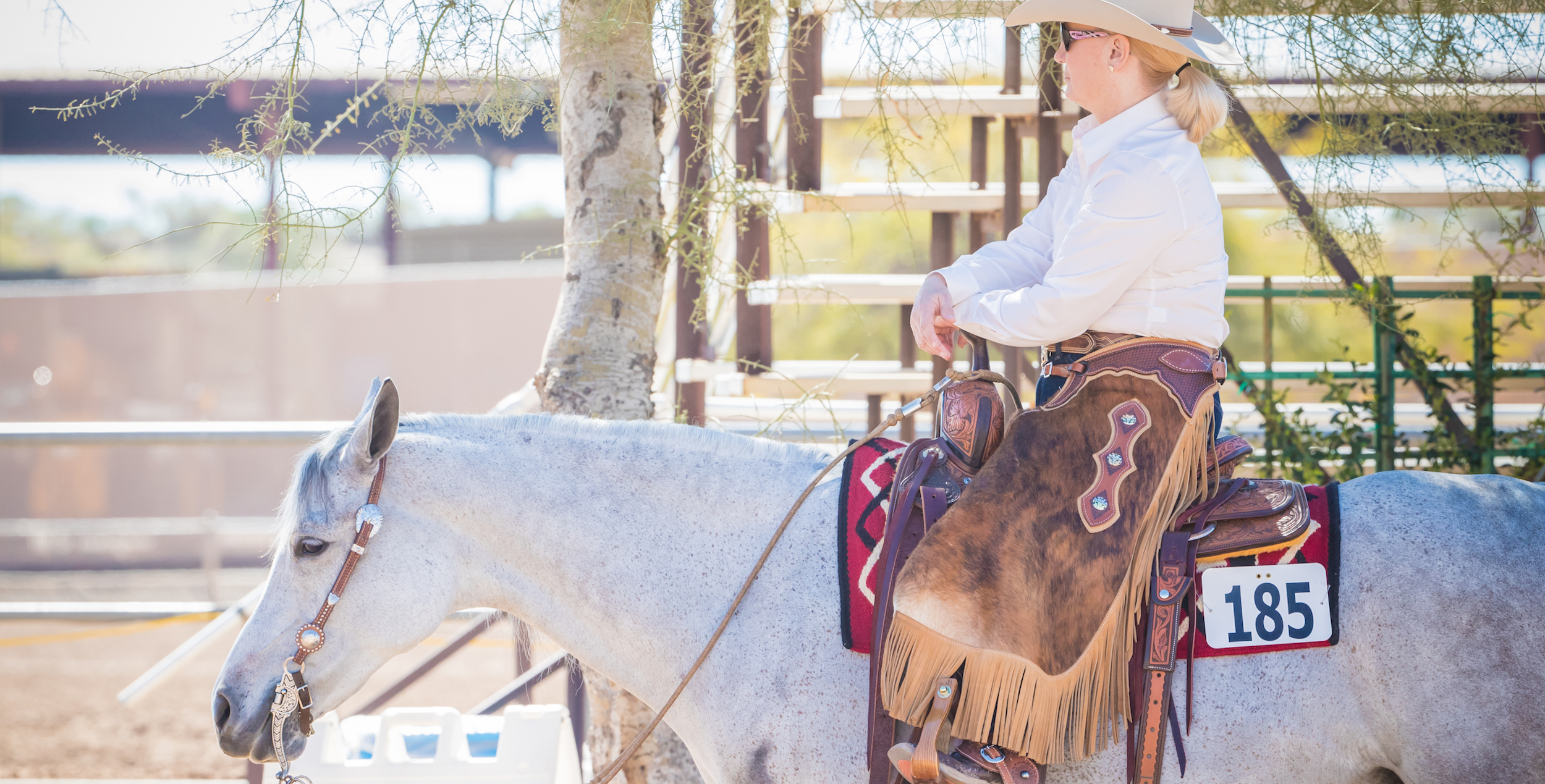
In the Confident Rider section of July 2018’s Horse&Rider (on newsstands now), trainer/coach/clinician Barbra Schulte talks about a specific kind of brain training. She explains how you can use a meditative state (deep breathing, relaxation) to imprint a visualization of success that’ll help you be calm and confident in the show pen.
Visualization techniques aren’t new, of course. Elite athletes of all types have been using them successfully for decades. What is new is the growing emphasis on a type of brain training called mindfulness meditation–that is, being aware of your thinking as opposed to being lost in thought. Mindfulness meditation can help with visualization and a host of other positive mental objectives.
I have some personal experience here. Since the first of the year, I’ve been spending five minutes a day at my own amateurish stab at meditation. I sit quietly, hushing my mind by focusing on my breathing, letting any stray thoughts that enter my head simply float away.
It’s like a little “time out” for myself. Not for bad behavior, though, but rather to avoid bad behavior related to stress—such as impatience, irritation, tension, lack of focus…all states that can thwart the communication we hope to have with our horses (and the humans in our lives, as well).
Researchers say any kind of meditation, practiced regularly, is good for us. It can lower blood pressure, reduce pain, increase energy, improve immune function, even enhance cellular health.
Mentally and emotionally, the benefits are equally stellar: reduced anxiety, enhanced memory and creativity, increased ability to focus. People who regularly quiet their minds report an improved sense of self, plus increased capacity for empathy and compassion.
In fact, the overall health benefits of meditation are so impressive that in March of this year, the University of Massachusetts Medical School announced the creation of a special division to study meditation’s therapeutic potential.
My own practice, which I call Quiet Time, is amazingly simple. Simple, but–like any form of meditation–not easy to do well. To try it yourself, just turn off your phone and set a timer for 5 minutes. Then sit on the forward edge of a hard chair (don’t lean against the chair’s back), feet flat on the floor, spine erect, eyes closed.
Take three long, relaxing breaths, each time exhaling longer than the inhale. Then just sit quietly, breathe normally, and continue to focus on your breathing until the timer dings. Whenever you notice your mind straying away from your breath—and it will! that’s the hard part–simply return the focus to your breathing.
As experts have explained, this repeated action of redirecting your attention is strengthening your brain’s ability to stay clear and focused. So, just as you bulk up a bicep with repeated bicep curls, you improve your brain’s ability to maintain clarity and focus with regular practice.
This in turn makes you better able to accomplish visualization and other mind techniques designed to improve your performance in the saddle and elsewhere.
Sound interesting? It is!
Give it a try, and in the meantime, here are insights from other trainers and clinicians who’ve made good use of mind training, visualization, and focus:
• Bob Avila: “Project in your mind the best run you can realistically have and you’ll have a better chance of success. When you can focus enough to recall every step in the show pen, then you can learn from each run and start thinking when you’re in competition.”
• Greg Ward: “Paint good pictures in your mind and then do it just like you ‘see’ it. Prepare yourself mentally and physically before you go out to compete, but once you’re competing, let your subconscious take over.”
• Gary Reynolds: “Create a show atmosphere at your barn. Dress in your show togs and make every move or action as though you’re truly at a show. Visualize the spectators, the judge, and other competitors. Practice processing the emotions those images bring, so when you do hit the in-gate, you’ll be better equipped to deal with them.”
• Peggy Martin: “Visualize yourself galloping all out, pushing the limits of what you’d ever consider in real life. This makes actual loping seem calm by comparison, thus expanding your comfort zone. As you visualize, note how the physical sensations of fear–butterflies in the stomach, quickened breathing, pounding heart–are similar to those of excitement. Eventually you’ll reroute the pathways in your brain, so that you come to view loping with more excitement than fear.”

